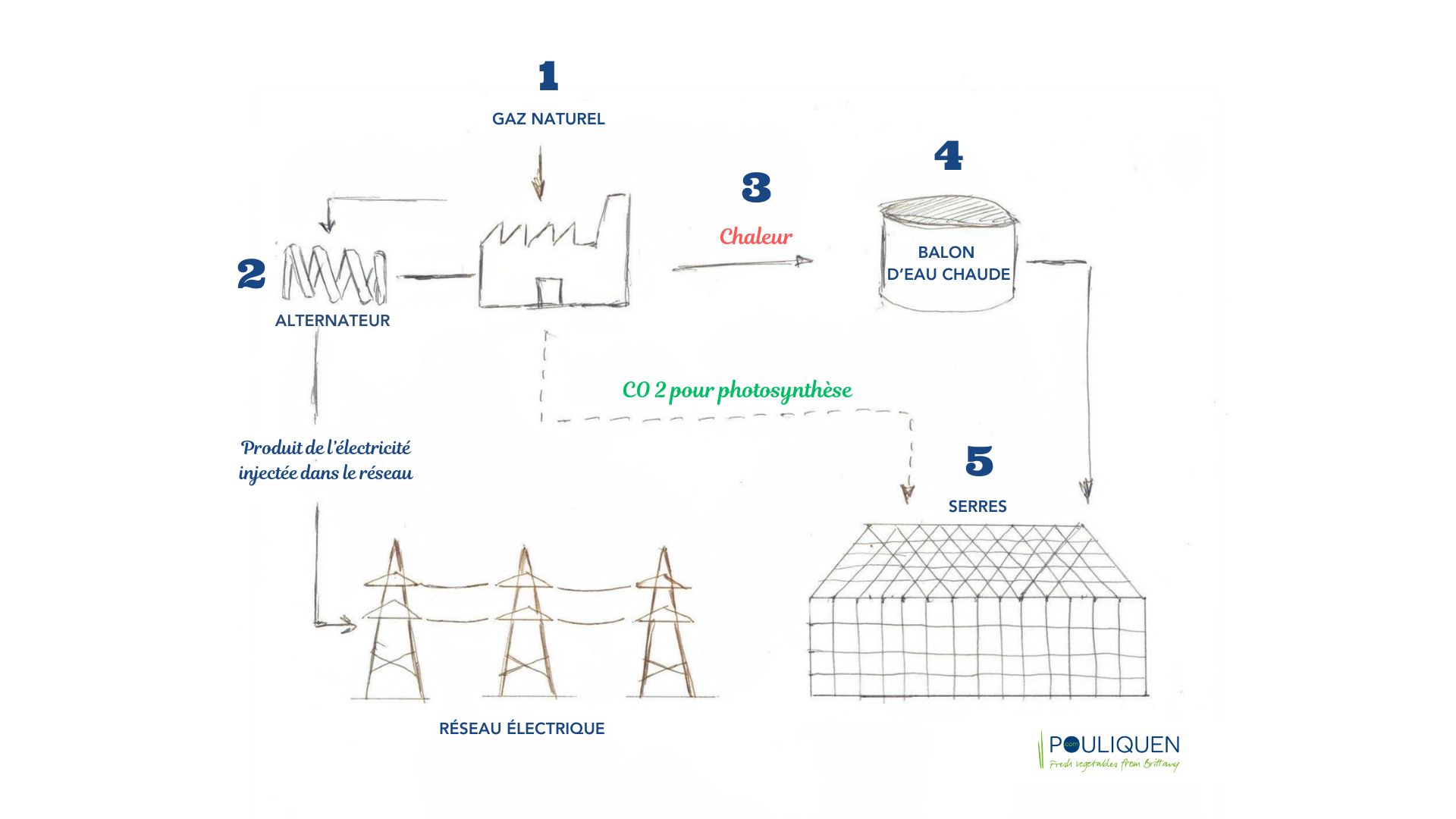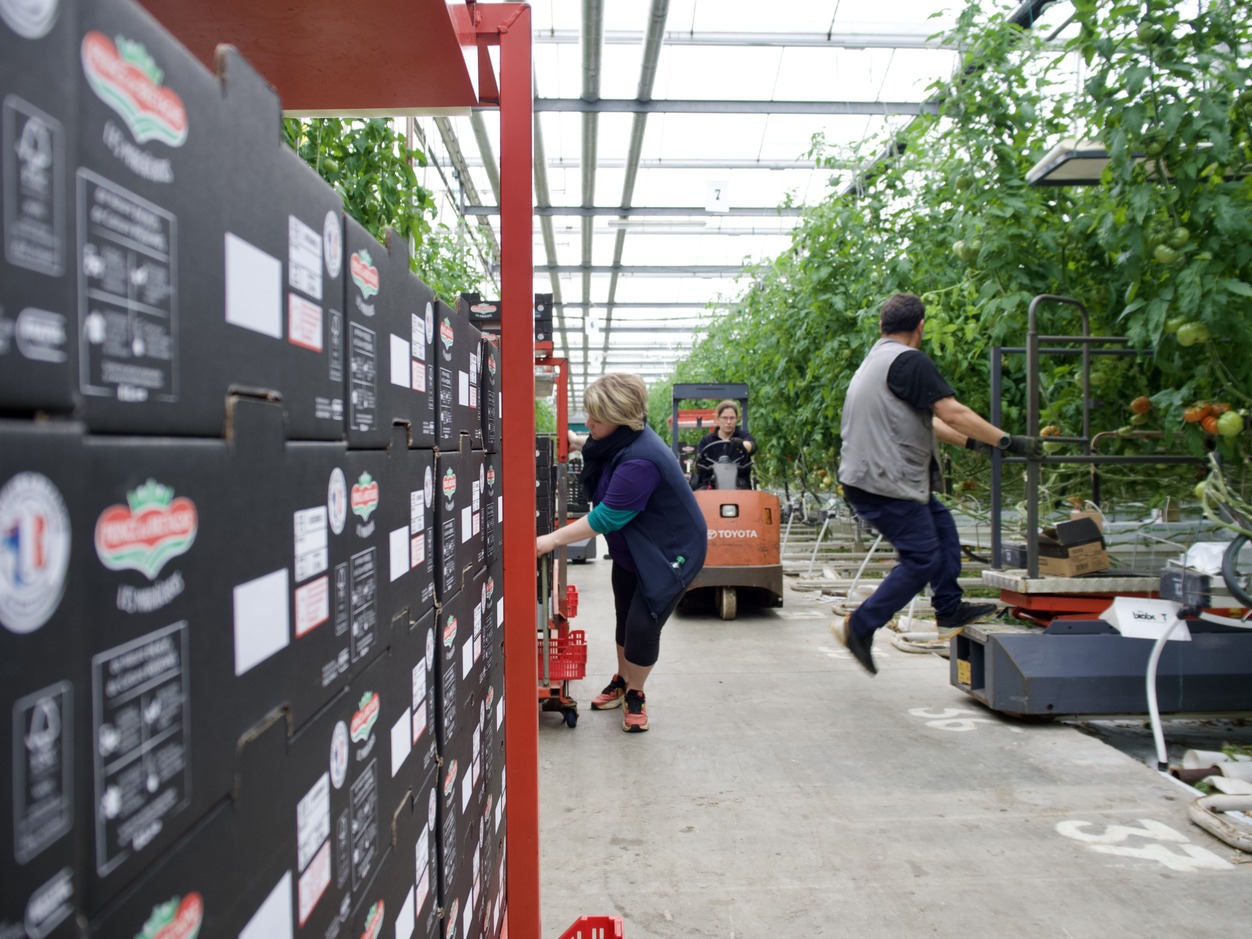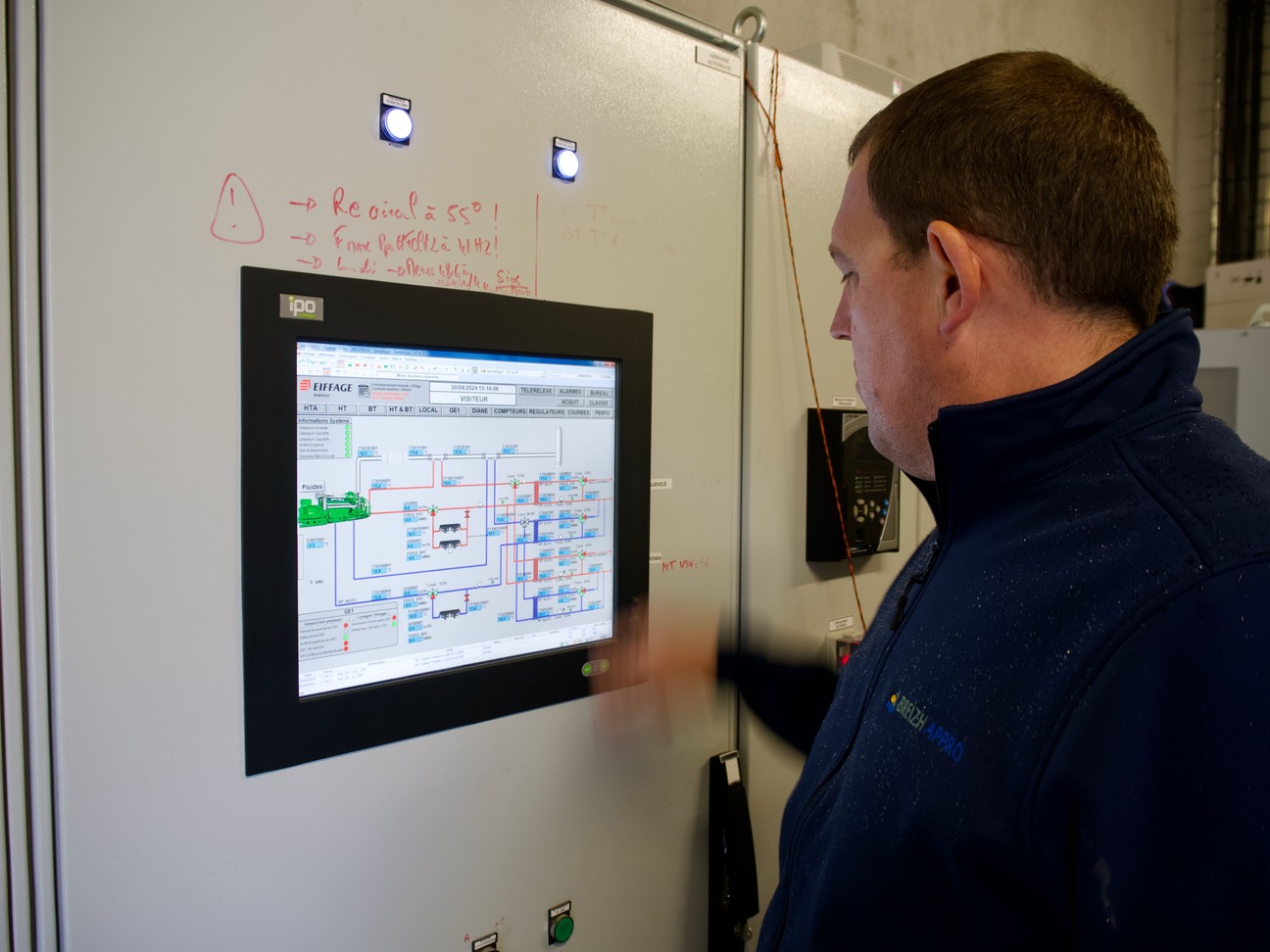Just over a decade ago, Brittany became France’s leading tomato-producing region. It alone accounts for almost a third of national production, with almost 600 hectares of greenhouses*. Although our region has not traditionally produced tomatoes for consumption, our vegetable-growing tradition and our producers’ taste for new challenges have led to strong growth in this crop since the 1990s. Their interest in technical and technological challenges has done the rest.
Indeed, Brittany, famous for its vegetable production and temperate climate, has become the scene of a silent but crucial revolution in the world of agriculture: the production of tomatoes in greenhouses using cogeneration. This innovative method, which has been adopted by 60% of the tomato greenhouses run by Prince de Bretagne producers, promises not only quality tomatoes all year round, but also a significant reduction in the environmental footprint. We explain everything in this article.
Total technical control
Soilless cultivation is the technique favoured by many of our Prince de Bretagne partner growers. Developed to limit contamination of tomato plants by soil-borne diseases, this technique has also helped to increase yields while maintaining product quality, thanks to total control of the tomato growing environment. With meticulously calculated water input, humidity management, controlled fertilisation and a water recycling system, this method guarantees efficient use of resources while preserving the local ecosystem.
Cogeneration: a step towards energy autonomy
However, the real revolution came with the adoption of cogeneration systems in 2006. This innovative technology uses natural gas to produce both electricity and heat, meeting the energy needs of the tomato greenhouses while reducing costs and environmental impact.
It works in an ingenious way: gas engines drive generators that produce electricity, while waste heat is recovered to heat the tomato greenhouses. What’s more, the CO2 produced is recovered and used to stimulate plant growth, creating a sustainable, self-sufficient ecosystem.

The benefits of cogeneration
There are many benefits for growers. In addition to the economic benefits generated by reduced energy costs, cogeneration improves product quality through precise control of the climate and nutrition of the tomato plants. What’s more, by stabilising the temperature in the greenhouses, this method encourages more effective biological control of disease, guaranteeing abundant, healthy harvests.
For the region as a whole, this technique also offers the opportunity to generate electricity locally, particularly in rural areas, which are often located at the end of the grid and therefore more prone to power cuts. In Brittany, the combined heat and power (CHP) plant has a combined capacity of 250 MW, or half the output of the Landivisiau gas-fired power station, located in the market-garden area and due to opened in spring 2022. Today, 60% of the tomato greenhouses operated by Prince producers in Brittany have a cogeneration unit, generating almost 110 MW.
Brittany is now establishing itself as a major player in innovation in tomato production, thanks to the adoption of advanced techniques such as soilless cultivation and cogeneration. This quiet revolution is testament to Brittany’s producers’ commitment to vegetable quality, energy efficiency and environmental sustainability. By offering you a wide range of varieties, both classic and original, we ensure that we meet all your expectations, while supporting local, environmentally-friendly agriculture.
Round, on the vine Marmande, Pineapple, cherries and beef… A wide range of consumer tomatoes
Whether conventional or organic, we offer you over thirty varieties of tomatoes, produced in Brittany. On the classic (but not ordinary) side, you’ll find the round tomato, the cluster, the olivine, the Aumônière and the Cocktail, ideal for aperitifs and picnics. For the original varieties, we’ve selected them for their organoleptic qualities, of course, but also for their unusual shapes and colours, which make them ideal for both stalls and plates. Tomates saveurs d’antan, Ananas or Marmande, San Marzano or Noire de Crimée … Don’t hesitate to ask us for advice on selecting the variety or varieties that will best satisfy your customers.

*Source : Reportage TV – France 3 Région


